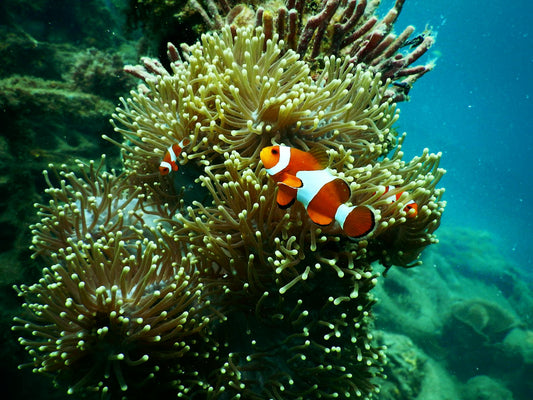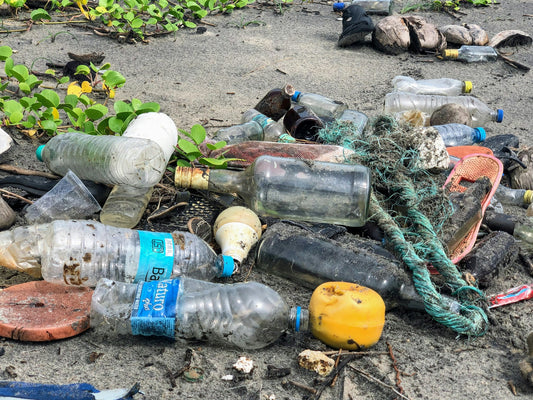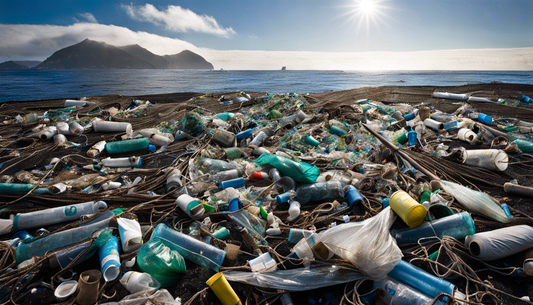Share
Bacteria Munching on Forever Chemicals:
Well, here's a cute idea: what if we didn't have to worry about "forever chemicals" living up to their ominous name because we had microbiological allies to help clean them up? A study led by a team at the University at Buffalo has found a strain of bacteria, Labrys portucalensis F11 (F11), capable of breaking down per- and polyfluoroalkyl substances (PFAS), chemicals known for their persistence in the environment. Even better, our tiny buddies can also transform some toxic leftovers of the bond-breaking process.
Feasting on PFAS:
In this microbial version of a dinner party, F11 was found to metabolize more than 90% of perfluorooctane sulfonic acid (PFOS), one of the most persistent and hazardous types of PFAS, over a period of 100 days. Additionally, two more types of PFAS were significantly degraded. Unlike many bacteria, F11 uses the strong bond between carbon and fluorine in PFAS as an energy source by breaking down the fluorine and consuming the carbon. The study also accounted for the formation of shorter-chain breakdown products, known as metabolites, some of which were further broken down by F11.
Environment’s Picky Eaters:
PFAS are used in a variety of products, from non-stick pans to firefighting materials, making them common but unwelcome contaminants in soil and water. But just like kids reluctantly trying broccoli, bacteria struggling in polluted environments have slowly learned to dine on PFAS. Through evolution, they have developed mechanisms to use these chemical contaminants to help them grow. The F11 strain, for instance, was isolated from the soil of a contaminated site in Portugal and has shown the ability to remove fluorine from both pharmaceutical contaminants and PFAS.
Tinkering with Bacterial Tendencies:
While the F11 did significant work in breaking down PFAS, it took a hefty 100 days to do so. Going forward, the researchers hope to figure out how to coax F11 into consuming PFAS more quickly, even in the presence of more appetizing and easy-to-degrade energy sources. The idea is to provide F11 with just enough food sources to grow but not too much that it ignores the chewier PFAS. In the future, F11 strains can potentially be used directly in PFAS-contaminated environments, whether by fostering its growth in wastewater treatment plants or through the process of bioaugmentation where the bacteria are injected directly into soil or groundwater at contaminated sites.
Well, here's a cute idea: what if we didn't have to worry about "forever chemicals" living up to their ominous name because we had microbiological allies to help clean them up? A study led by a team at the University at Buffalo has found a strain of bacteria, Labrys portucalensis F11 (F11), capable of breaking down per- and polyfluoroalkyl substances (PFAS), chemicals known for their persistence in the environment. Even better, our tiny buddies can also transform some toxic leftovers of the bond-breaking process.
Feasting on PFAS:
In this microbial version of a dinner party, F11 was found to metabolize more than 90% of perfluorooctane sulfonic acid (PFOS), one of the most persistent and hazardous types of PFAS, over a period of 100 days. Additionally, two more types of PFAS were significantly degraded. Unlike many bacteria, F11 uses the strong bond between carbon and fluorine in PFAS as an energy source by breaking down the fluorine and consuming the carbon. The study also accounted for the formation of shorter-chain breakdown products, known as metabolites, some of which were further broken down by F11.
Environment’s Picky Eaters:
PFAS are used in a variety of products, from non-stick pans to firefighting materials, making them common but unwelcome contaminants in soil and water. But just like kids reluctantly trying broccoli, bacteria struggling in polluted environments have slowly learned to dine on PFAS. Through evolution, they have developed mechanisms to use these chemical contaminants to help them grow. The F11 strain, for instance, was isolated from the soil of a contaminated site in Portugal and has shown the ability to remove fluorine from both pharmaceutical contaminants and PFAS.
Tinkering with Bacterial Tendencies:
While the F11 did significant work in breaking down PFAS, it took a hefty 100 days to do so. Going forward, the researchers hope to figure out how to coax F11 into consuming PFAS more quickly, even in the presence of more appetizing and easy-to-degrade energy sources. The idea is to provide F11 with just enough food sources to grow but not too much that it ignores the chewier PFAS. In the future, F11 strains can potentially be used directly in PFAS-contaminated environments, whether by fostering its growth in wastewater treatment plants or through the process of bioaugmentation where the bacteria are injected directly into soil or groundwater at contaminated sites.
We hope you enjoyed this article. Please feel free to leave a comment below if you want to engage in the discussion.
If you want to read more like this, make sure to check out our Blog and follow us on Instagram. If you are interested in truly sustainable products, check out our Shop.
Check out the original source here.








